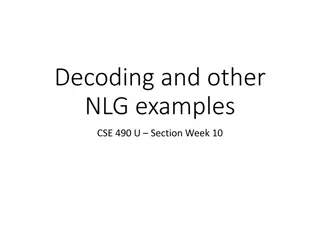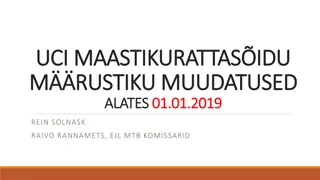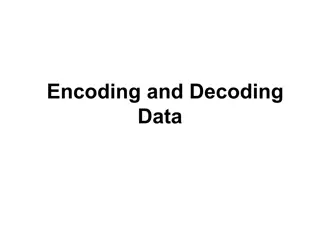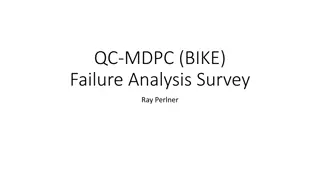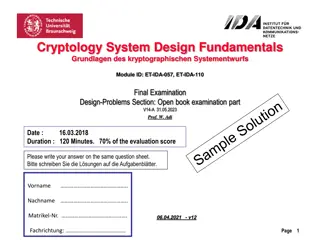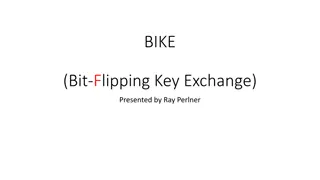Insights into the Rowhammering.BIKE Cryptosystem and Decoding Strategies
Explore the Rowhammering.BIKE cryptosystem, its parameters, and the black-grey flip decoder. Learn about the bitflipping algorithm, prior analysis of DFR in QC-MDPC decoders, and strategies for key recovery and decoding in this innovative system. Discover how understanding the error patterns related to the private key can enhance security against potential rowhammer attacks.
Download Presentation

Please find below an Image/Link to download the presentation.
The content on the website is provided AS IS for your information and personal use only. It may not be sold, licensed, or shared on other websites without obtaining consent from the author.If you encounter any issues during the download, it is possible that the publisher has removed the file from their server.
You are allowed to download the files provided on this website for personal or commercial use, subject to the condition that they are used lawfully. All files are the property of their respective owners.
The content on the website is provided AS IS for your information and personal use only. It may not be sold, licensed, or shared on other websites without obtaining consent from the author.
E N D
Presentation Transcript
The Bike Cryptosystem Parameters: ?: degree of polynomials ? = ?/2: Hamming weight of polynomials 0, 1 ?: Sum of the Hamming weights
Basic rowhammer strategy Manipulate 0, 1between steps 1 and 2 of keygen Flip 1s to 0 Easy to analyze Each successful flip reduces the cost of key recovery using ISD by a factor of 2 But only 1 in 175 bits start out as 1s (category I) Flip 0s to 1 Increasing the number of 1s in 0, 1from ? to ? increases DFR Need DFR for honest ciphertexts to be > ~240 Use knowledge of the bits flipped to sample over ciphertexts with higher expected DFR
Bitflipping algorithm Think of ? = ( 0, 1) as an ? 2? matrix. ?0 ?1 The syndrome ? = ?0 1= ?0 0+ ?1 1= ? of ? that have the same index as a nonzero bit of ?0 is the sum of columns ?1. Basic idea, guess that the columns of ? with a lot of bits in common with ? This is a good heuristic when w t < 2? For w t > 2?, each new column added to syndrome as likely to flip 1 to 0 as 0 to 1. Iterated BF decoder After guess, subtract syndrome for guessed errors from current syndrome, and try again for some number of iterations to get the rest of the errors.
Prior Analysis of the BIKE DFR QC-MDPC decoders with several shades of Grey (Drucker, Gueron, Kostic 2019) https://eprint.iacr.org/2019/1423 Empirical measurements of where DFR becomes noticeable, eyeballing it (Actually, eyeballing how parameters changed when BIKE changed from targeting CPA to CCA), it looks like we could effectively increase w by about 30 and still have a reasonable chance of decoding random honest ciphertexts Valentin Vasseur PHD defense https://who.rocq.inria.fr/Valentin.Vasseur/papers/2021-03-29-thesis-Vasseur.pdf (Chapter 16: Error Floors) gives hard to decode error patterns related to the private key. DFR depends on the distance of the error to these patterns. These could be used by a rowhammer attacker to failure boost, since the rowhammer attacker would know where some of the bits of the rowhammered private key are. Rowhammerer could potentially sample ciphertexts about 20 bits closer than random to problematic patterns for ~2^50 work.










